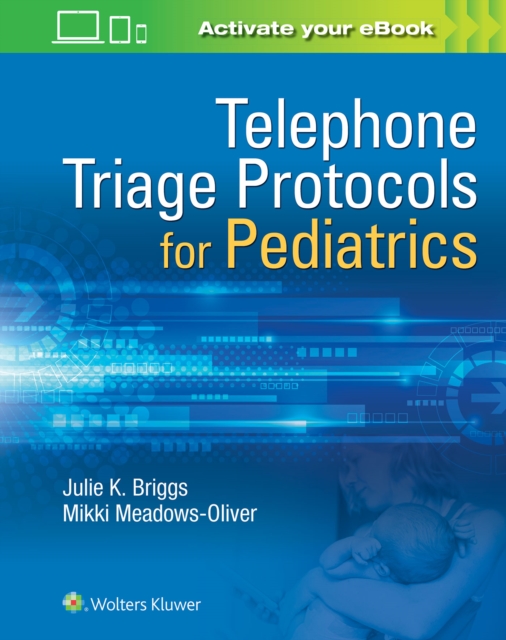
Telephone Triage for Pediatrics Spiral bound
by Julie Briggs, Mikki, PhD, RN, PNP-BC Meadows-Oliver
Spiral bound
- Information
Description
Handle questions about pediatric care with confident accuracy: Telephone Triage Protocols for Pediatrics is the quick-access guide to providing fast, efficient phone assessments and accurate care recommendations. This comprehensive, on-the-spot resource lists a broad range of symptoms alphabetically.
A flow chart format provides the crucial Yes or No questions to ask, with each answer moving quickly to optimal recommendations or instructions.
A vital resource for all nurses, this is irreplaceable to those in pediatric or family practice. Tap into top-level guidance for fast, efficient assessments …Step-by-step guidance for making accurate assessments —170 proven protocols addressing a wide range of symptoms, disorders, and medical emergencies, for newborn to age 18Sorts life-threatening problems from those not requiring physician or emergency care—callers are directed to make an appointment, seek emergency care, or follow home care instructionsIncreases consistency of advice and documentationSupports nurses of all knowledge and experience levelsColor tabs for each section enable quick accessSymptoms alpha-organized and grouped by level of urgency, addressing injuries, trauma, pain, swelling, and other symptoms for:Head, eyes, ears, nose, throat, mouth, back, neck, arm, and legBody system problems – chest/cardiovascular, respiratory GI, genital/obstetrics and gynecological problems, urination, and skin problemsChronic and infectious diseasesBehavioral problemsInfant-specific problemsSections under every symptom include:Key Questions to ask the callerOther Protocols to ConsiderReminders – for proper documentationAssessment – symptoms and conditions that determine urgencyAction column – Following Yes or No answers to assessment questions, with emergency actions appearing firstImmediate actions – proven protocols and/or referrals to emergency, physician, or at-home careHome Care Instructions – before emergency care, before appointment, or at-home careEmergency Instructions – in-the-moment first aidReport the Following Problems – what caller should tell their physician or emergency departmentSeek Emergency Care Immediately – if certain symptoms occurMust-have resource for medical offices, clinics, schools, emergency departments, urgent care centers, home health agencies, and managed healthcare providersAbout The AuthorsJulie Briggs, RN, BSN, MHA, is Director of the Emergency Department at Good Samaritan Community Healthcare in Puyallup, Washington. Mikki Meadows-Oliver, PhD, RN, PNP-BC, is an Associate Professor at the Yale University School of Nursing in Orange, Connecticut.
Information
-
Available to Order - This title is available to order, with delivery expected within 2 weeks
- Format:Spiral bound
- Pages:592 pages, 0
- Publisher:Lippincott Williams and Wilkins
- Publication Date:21/09/2017
- Category:
- ISBN:9781496363602
Other Formats
- EPUB from £37.54
Information
-
Available to Order - This title is available to order, with delivery expected within 2 weeks
- Format:Spiral bound
- Pages:592 pages, 0
- Publisher:Lippincott Williams and Wilkins
- Publication Date:21/09/2017
- Category:
- ISBN:9781496363602